 My niece, Jessi Sawdon is a woman of many talents. First and foremost, she is a great wife and mother. Her husband Jason is a Wyoming Highway Patrolman, and Jessi make a perfect partner for him in all work related events, as he does for her. Together they have a beautiful little girl named Adelaide. Jessi stays quite busy keeping up with Adelaide, who is a little girl on the go. Adelaide is starting to talk very well, and she had begun to remind her grandparents of her mommy as she was growing up. My sister, Allyn Hadlock, Jessi’s mom tells me that she finds many of the things Adelaide says and does funny, because Adelaide does some of the same things Jessi used to do at that age. If Jessi wants Adelaide to do something she will tell Adelaide, “I’ll do it” and then Adelaide is SURE to do it! We used to use that same reverse psychology on Jessi and she would do what we wanted every time! Ally says it is hilarious! I think that Jessi learned from her parents, and now that knowledge is working for her with Adelaide too, in quite a comical way, I think.
My niece, Jessi Sawdon is a woman of many talents. First and foremost, she is a great wife and mother. Her husband Jason is a Wyoming Highway Patrolman, and Jessi make a perfect partner for him in all work related events, as he does for her. Together they have a beautiful little girl named Adelaide. Jessi stays quite busy keeping up with Adelaide, who is a little girl on the go. Adelaide is starting to talk very well, and she had begun to remind her grandparents of her mommy as she was growing up. My sister, Allyn Hadlock, Jessi’s mom tells me that she finds many of the things Adelaide says and does funny, because Adelaide does some of the same things Jessi used to do at that age. If Jessi wants Adelaide to do something she will tell Adelaide, “I’ll do it” and then Adelaide is SURE to do it! We used to use that same reverse psychology on Jessi and she would do what we wanted every time! Ally says it is hilarious! I think that Jessi learned from her parents, and now that knowledge is working for her with Adelaide too, in quite a comical way, I think.

Jessi’s sister, Lindsay says that Jessi is the coordinator of all the things. That made me laugh, because my mind went back to a younger Jessi, as she arranged things with the other children. One time was when she was trying to get her cousin Michelle to cooperate in a picture, and when things didn’t go well, Jessi glared at Michelle. That made a better picture than the planned take Jessi was trying to accomplish. Lindsay told me that Jessi was very good at “coordinating us.” I think I have to agree with Lindsay on that. Lindsay also said “As a sister, she is always good at making you laugh, cheering you up if your down, and just calling to talk. She is the best at movie quotes.”
Jessi takes great pride in her community, and Casper is very blessed to have her promotion it. She has been working with David Street Station, professionally. Jessi is a marketing professional at Hinge Studio Marketing and Communications. She also designs websites and does pictures and videos for the company and their clients. One nice thing for Jessi at this time in her life and career, is the fact that she gets to work from home.  The owners of Hinge Studio Marketing and Communications are two friends of Jessi’s. The company is fairly new, but they doing very well and they are already very busy. Aside from being a great marketing professional for the Davis street station, Jessi loves to attend all the fun things going on there, and to make sure everyone knows what’s going on in Casper. She really is an advocate for all things Casper. Yes, they are clients for her work, but they are so much more than that to Jessi. And Jessi always knows what is going on in Casper and she is seriously involved! She loves to shop local, eat local and play local! Jason and Adelaide are frequently with Jessi at events they promote, so it is a fun time for the whole family. today is Jessi’s birthday. Happy birthday Jessi!! Have a great day!! We love you!!
The owners of Hinge Studio Marketing and Communications are two friends of Jessi’s. The company is fairly new, but they doing very well and they are already very busy. Aside from being a great marketing professional for the Davis street station, Jessi loves to attend all the fun things going on there, and to make sure everyone knows what’s going on in Casper. She really is an advocate for all things Casper. Yes, they are clients for her work, but they are so much more than that to Jessi. And Jessi always knows what is going on in Casper and she is seriously involved! She loves to shop local, eat local and play local! Jason and Adelaide are frequently with Jessi at events they promote, so it is a fun time for the whole family. today is Jessi’s birthday. Happy birthday Jessi!! Have a great day!! We love you!!
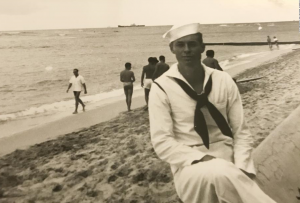 When someone is killed in a war, we are always in the hope that they will be found quickly, and identified by their friends, so that their remains can be returned to their family for a proper burial. Unfortunately, that is not always the case. Nevertheless, we hope that the time passing between death and identification is a very short amount. Unfortunately that was not the case with Carl David Dorr, who was one of the 429 sailors and Marines killed on board the USS Oklahoma when it was sunk in the Japanese attack on Pearl Harbor. Only 35 people on the ship were positively identified and buried in the years immediately following the December 7, 1941, military strike, according to the Defense Department. The unidentified remains were buried as unknowns at the National Memorial Cemetery of the Pacific, which fills the Punchbowl crater in Honolulu. For 77 years, Dorr’s family has been waiting and wondering what became of him. They knew he was at Pearl Harbor, and that he
When someone is killed in a war, we are always in the hope that they will be found quickly, and identified by their friends, so that their remains can be returned to their family for a proper burial. Unfortunately, that is not always the case. Nevertheless, we hope that the time passing between death and identification is a very short amount. Unfortunately that was not the case with Carl David Dorr, who was one of the 429 sailors and Marines killed on board the USS Oklahoma when it was sunk in the Japanese attack on Pearl Harbor. Only 35 people on the ship were positively identified and buried in the years immediately following the December 7, 1941, military strike, according to the Defense Department. The unidentified remains were buried as unknowns at the National Memorial Cemetery of the Pacific, which fills the Punchbowl crater in Honolulu. For 77 years, Dorr’s family has been waiting and wondering what became of him. They knew he was at Pearl Harbor, and that he  was on the USS Oklahoma. The bodies were there, but they could not be identified. I can’t think of anything that would be more frustrating than that. Sadly, the wait was beyond long…it was 77 years. When I think about his family, first losing their 27 year old son, and then not being able to bury their son. They died without that closure.
was on the USS Oklahoma. The bodies were there, but they could not be identified. I can’t think of anything that would be more frustrating than that. Sadly, the wait was beyond long…it was 77 years. When I think about his family, first losing their 27 year old son, and then not being able to bury their son. They died without that closure.
Carl’s family, like most American families, gathered around the radio on December 7, 1941. The news was grim. They didn’t know much yet, but they knew Carl’s ship had been attacked. With sinking hearts, they tied to hold out hope that by some miracle, he had survived. Then, they received the crushing news that he was missing in action…then, presumed dead. After the Defense Department began DNA collection in 2009, his family provided samples in hopes that one day it would help identify Carl’s body, his nephew said. His mother kept an heirloom photograph in her living room “so she could keep an eye on him,” Thomas Dorr said. She was  able to see her son every day, even if he never made it home at all. And, of course, he never did, at least during their lifetime.
able to see her son every day, even if he never made it home at all. And, of course, he never did, at least during their lifetime.
Recently, the DNA provided for identification purposed, finally paid off. Dorr’s body was finally identified, and he was going home at last. About 15 of Dorr’s relatives walked onto the tarmac of South Carolina’s Greenville-Spartanburg International Airport. As they watched, a flag-draped coffin was lowered from the plane into a hearse. “There was nothing but dead silence,” Carl’s 70-year-old nephew, Thomas Dorr, who lives in St. Johns, Florida, told CNN. “I knew that what I was experiencing was history.” Carl David Dorr was finally going to be laid to rest, and how fitting that his funeral would be held on the same day that he died, December 7, but 77 years after the day he died…Pearl Harbor Day.
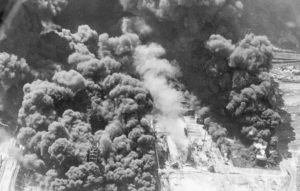 Coal mining, especially underground coal mining can be a dangerous occupation. No matter how hard the safety coordinators tried to keep people safe, and no matter how stringent the safety regulations were, accidents happened and sometimes, lives were lost. Coal mining was especially dangerous when coal dust ignited. Explosions were the main cause of death in the mines,especially the underground mines. And that was just the instantaneous death. Breathing the dust caused a slow death over time. In 1883, the creation of the Norfolk and Western Railway opened a gateway to the untapped coalfields of southwestern West Virginia. New mining towns sprung up in the region practically overnight, with European immigrants and African Americans from the south pouring into southern West Virginia looking for work in the new industry. By the late 19th century, West Virginia was a national leader in the production of coal,but the state fell far behind other major coal-producing states in regulating the mining conditions. In addition to poor economic conditions, West Virginia had a higher mine death rate than any other state. Nationwide, a total of 3,242 Americans were killed in mine accidents in 1907, but no one accident could compare to the accident that was about to unfold as the year neared its end. No on was prepared for the horror that was to come in Monongah in December.
Coal mining, especially underground coal mining can be a dangerous occupation. No matter how hard the safety coordinators tried to keep people safe, and no matter how stringent the safety regulations were, accidents happened and sometimes, lives were lost. Coal mining was especially dangerous when coal dust ignited. Explosions were the main cause of death in the mines,especially the underground mines. And that was just the instantaneous death. Breathing the dust caused a slow death over time. In 1883, the creation of the Norfolk and Western Railway opened a gateway to the untapped coalfields of southwestern West Virginia. New mining towns sprung up in the region practically overnight, with European immigrants and African Americans from the south pouring into southern West Virginia looking for work in the new industry. By the late 19th century, West Virginia was a national leader in the production of coal,but the state fell far behind other major coal-producing states in regulating the mining conditions. In addition to poor economic conditions, West Virginia had a higher mine death rate than any other state. Nationwide, a total of 3,242 Americans were killed in mine accidents in 1907, but no one accident could compare to the accident that was about to unfold as the year neared its end. No on was prepared for the horror that was to come in Monongah in December.
The worst mining accident in United States occurred on December 6, 1907. The mine was the Monongah Coal 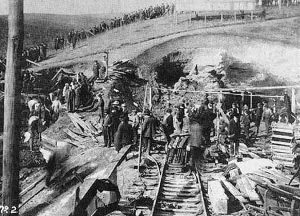 Mine in West Virginia’s Marion County. on that date, an explosion in a network of mines owned by the Fairmont Coal Company in Monongah killed 362 coal miners. Officially, there were 367 men in the two mines, but the actual number was much higher because officially registered workers often took their children and other relatives into the mine to help. No one thought of the practice as dangerous. At 10:28am an explosion occurred that killed most of the men inside the mine instantly. The blast went on to cause considerable damage to both the mine and the surface. The ventilation systems, necessary to keep fresh air supplied to the mine, were destroyed along with many rail cars and other equipment. The explosion blew the timbers supporting the roof down causing further issues when the roof collapsed. Investigators believed that an electrical spark or one of the miners’ open flame lamps ignited coal dust or methane gas, but the cause of the explosion was not determined.
Mine in West Virginia’s Marion County. on that date, an explosion in a network of mines owned by the Fairmont Coal Company in Monongah killed 362 coal miners. Officially, there were 367 men in the two mines, but the actual number was much higher because officially registered workers often took their children and other relatives into the mine to help. No one thought of the practice as dangerous. At 10:28am an explosion occurred that killed most of the men inside the mine instantly. The blast went on to cause considerable damage to both the mine and the surface. The ventilation systems, necessary to keep fresh air supplied to the mine, were destroyed along with many rail cars and other equipment. The explosion blew the timbers supporting the roof down causing further issues when the roof collapsed. Investigators believed that an electrical spark or one of the miners’ open flame lamps ignited coal dust or methane gas, but the cause of the explosion was not determined.
Time was of the essence to bring people out of a mine accident alive, because at that time they didn’t know much about restoring the air supply to the people trapped below. The first volunteer rescuers entered the two mines 25 minutes after the initial explosion. The biggest threats to rescuers are the various fumes, particularly “blackdamp”, a mix of carbon dioxide and nitrogen that contains no oxygen, and “whitedamp”, which is carbon monoxide. The lack of breathing apparatus at the time made venturing into these areas impossible. Rescuers could only stay in the mine for 15 minutes at a time. In a vain effort to protect themselves, some of the miners 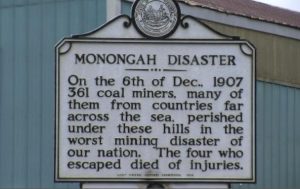 tried to cover their faces with jackets or other pieces of cloth. While this may filter out particulate matter, it would not protect the miners in an oxygen-free environment. The toxic fume problems were compounded by the infrastructural damage caused by the initial explosion…mines require large ventilation fans to prevent toxic gas buildup, and the explosion at Monongah had destroyed all of the ventilation equipment. The inability to clear the mine of gases transformed the rescue effort into a recovery effort. One Polish miner was rescued and four Italian miners escaped. Following the accident, the United Mine Workers of America labor union and sympathetic legislators forced safety regulations that brought a steady decline in death rates in West Virginia and elsewhere.
tried to cover their faces with jackets or other pieces of cloth. While this may filter out particulate matter, it would not protect the miners in an oxygen-free environment. The toxic fume problems were compounded by the infrastructural damage caused by the initial explosion…mines require large ventilation fans to prevent toxic gas buildup, and the explosion at Monongah had destroyed all of the ventilation equipment. The inability to clear the mine of gases transformed the rescue effort into a recovery effort. One Polish miner was rescued and four Italian miners escaped. Following the accident, the United Mine Workers of America labor union and sympathetic legislators forced safety regulations that brought a steady decline in death rates in West Virginia and elsewhere.
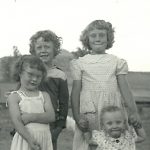 My mother-in-law, Joann Schulenberg was the eldest of her parents three living children. Her older brother Everett passed away at birth. The second living child was Linda Cole, who was born 15 years after her older sister. Following Linda, youngest sister, Margaret was born three years later. It was almost like having two separate families, because Joann was practically grown up by the time her younger siblings arrived. In reality, Linda and Margee grew up with nieces and nephews, some of whom were closer in age to them than their own sister was, and there sister was almost like a second mother to them.
My mother-in-law, Joann Schulenberg was the eldest of her parents three living children. Her older brother Everett passed away at birth. The second living child was Linda Cole, who was born 15 years after her older sister. Following Linda, youngest sister, Margaret was born three years later. It was almost like having two separate families, because Joann was practically grown up by the time her younger siblings arrived. In reality, Linda and Margee grew up with nieces and nephews, some of whom were closer in age to them than their own sister was, and there sister was almost like a second mother to them.
Linda grew up and married Bobby Cole on December 29, 1965. Their marriage was blessed with a daughter, Sheila and a son, Patrick, both of whom are married and have children of their own now. Linda and Bobby ran a hotel in Kennebec, South Dakota for most of the years while their children were growing up. They loved the small town of Kennebec, and the social scene in the area. For a number of years, they were a part of a square dance club. I remember all their great dance clothes, and how much they loved being part of that club. I think it was the most fun they had in a long time.
 Unfortunately, the economy in Kennebec wasn’t doing too well, and after they lost their hotel to a fire, they decided that it was time for a change. The decided to move to Winnemucca, Nevada. they thought that the gambling might be just the ticket for them. The both found work in the casinos there, and dabbled in gambling on their time off. They really enjoyed their lives in Winnemucca. They were in a warmer climate, and far away from the harsh South Dakota winters. They would live out the remainder of their lives in Winnemucca. Bobby passed away on May 30, 2014, of cancer. After his passing, Linda seemed content to stay in Winnemucca, until her passing on September 22, 2016 of a heart attack. We miss them both very much. Today would have been Linda’s 71st birthday. Happy birthday in heaven Linda. We love you.
Unfortunately, the economy in Kennebec wasn’t doing too well, and after they lost their hotel to a fire, they decided that it was time for a change. The decided to move to Winnemucca, Nevada. they thought that the gambling might be just the ticket for them. The both found work in the casinos there, and dabbled in gambling on their time off. They really enjoyed their lives in Winnemucca. They were in a warmer climate, and far away from the harsh South Dakota winters. They would live out the remainder of their lives in Winnemucca. Bobby passed away on May 30, 2014, of cancer. After his passing, Linda seemed content to stay in Winnemucca, until her passing on September 22, 2016 of a heart attack. We miss them both very much. Today would have been Linda’s 71st birthday. Happy birthday in heaven Linda. We love you.
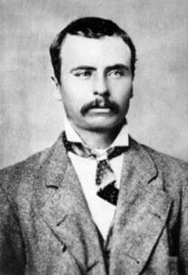 Deadwood, South Dakota maybe started out as an illegal town, but once it was established, there came a need for things like mail, supplies, and transportation, the latter of which brought the need for a stagecoach. The biggest problem with the stagecoach was the fact that the lawless element in the area thought it would be an easy target for robbery. The stagecoaches became a ride for the very brave. Soon it became apparent that the stagecoaches were going to need some protection.
Deadwood, South Dakota maybe started out as an illegal town, but once it was established, there came a need for things like mail, supplies, and transportation, the latter of which brought the need for a stagecoach. The biggest problem with the stagecoach was the fact that the lawless element in the area thought it would be an easy target for robbery. The stagecoaches became a ride for the very brave. Soon it became apparent that the stagecoaches were going to need some protection.
Daniel “Boone” May was born in Missouri in 1852. Going by the name of “Boone,” he was the son of Samuel and Nancy May, the seventh of nine children. Later, he moved with his family to Bourbon County, Kansas, where his father worked as a farmer. In 1876, “Boone” and his older brother moved to Cheyenne, Wyoming, where they worked in the freight business. During this time, the Black Hills were crawling with road agents and hostile Sioux Indians.It was a dangerous time to be working along the roadways in that area. Nevertheless, May did very well there, and he decided to buy a ranch between the Platte River and Deadwood by the end of that year.
“Boone’s” bravery and work ethic soon came to the attention of the stagecoach service, and he was soon recruited as a shotgun messenger for the Cheyenne and Black Hills Stage & Express Company. He also served as the station keeper at Robbers’ Roost in Wyoming Territory. Within just a few years, “Boone” was thought to have been in at least eight shooting incidents with outlaws. Many people said that he was the fastest gun in the Dakotas. His adventures soon became well known.
One of the first hold-ups “Boone” was involved in was in August, 1877, when a Deadwood Coach was intercepted at Robber’s Roost. On this occasion, even though “Boone” wanted to fight it out, he decided to lay down his weapons, because a woman and child were in the coach. The robbers made away with the passenger’s money, weapons and personal property. While they lost their things, I’m sure they decided that it was best to walk away with their lives. A short time later, “Boone” ran into one of the bandits, a man named Prescott Webb, in Deadwood and within no time, gunfire erupted between the two men. Though “Boone” was hit in the left wrist, he returned fire as Webb jumped on a horse to make his getaway. “Boone’s” shots hit Webb in the shoulder, and the horse several times, bringing it down. Webb was quickly arrested by Sheriff Seth Bullock and later that day, Webb’s companions who had aided in the robbery, were also arrested.
In 1878, stagecoaches known as “treasure coaches” were running regularly between Deadwood and Cheyenne. Their cargo was strong boxes filled with gold, as well as the U.S. Mail. These “treasure coach” stages often became the target of bandits, and after one of these coaches was held up on July 2, 1878, the U.S. Postal Service appointed a number of special agents to bring the outlaws to justice. “Boone” and ten other men were soon appointed as U.S. Deputy Marshals and equipped with good horses and ammunition. One of “Boone’s” first encounters with bandits as a U.S. Deputy Marshal occurred on the night of September 13, 1878. He and another messenger were trailing a Cheyenne bound coach which was approached by bandits near Old Woman’s Creek in the Wyoming Territory. “Boone” and another deputy, Zimmerman surprised the outlaws and shooting erupted. “Boone” wounded one bandit named Frank Towle and the others fled empty handed. Leaving their Towle wounded on the ground, the two messengers went after the other bandits but were unable to capture them. When they returned to the robbery site, Towle was gone.
On September 26, 1878, when “Boone” and other messengers were waiting to escort a coach at Beaver Station on the Wyoming-Dakota border, but the stage failed to show up. They went in search of the coach, and met another messenger who told them it had been robbed and a passenger killed. “Boone” quickly joined a posse to go after the outlaws, but they escaped. The following month, “Boone” learned of the hiding place of a robber named Archie McLaughlin and quickly went after him and his gang. Capturing them north of Cheyenne, the outlaws were sent under guard to Deadwood on the northbound coach. Unfortunately, the stage never make it, because on November 3, 1878, it was stopped by vigilantes who hanged Archie McLaughlin and another man named Billy Mansfield. The next month, “Boone” was in a posse that brought in a robber named Tom Price. The bandit tried to escape, and was wounded, and then was brought in. Late in 1879, “Boone” was sent to assist Special Agent William Llewellyn in the capture of a mail robber named Curley Grimes. They tracked the outlaw  to Elk Creek, located halfway between Rapid City and Fort Meade where they arrested him. That night, as the group neared Fort Meade, Grimes attempted to escape and was shot and killed by “Boone” and Llewellyn. By this time, “Boone” had made such a reputation for himself that he became a target for many of the outlaws who repeatedly tried to assassinate him, unsuccessfully. “Boone” also worked as a messenger for the Black Hills Placer Mining Company in the summer of 1880, and was said to have killed at least one robbers during this time. A short time later, “Boone” resigned from the company and left the Black Hills. He turned up in Santiago, Chili in 1883. He shot an army officer in 1891, he fled to Brazil. He died of yellow fever in Rio de Janeiro in 1910.
to Elk Creek, located halfway between Rapid City and Fort Meade where they arrested him. That night, as the group neared Fort Meade, Grimes attempted to escape and was shot and killed by “Boone” and Llewellyn. By this time, “Boone” had made such a reputation for himself that he became a target for many of the outlaws who repeatedly tried to assassinate him, unsuccessfully. “Boone” also worked as a messenger for the Black Hills Placer Mining Company in the summer of 1880, and was said to have killed at least one robbers during this time. A short time later, “Boone” resigned from the company and left the Black Hills. He turned up in Santiago, Chili in 1883. He shot an army officer in 1891, he fled to Brazil. He died of yellow fever in Rio de Janeiro in 1910.
 Anyone who has spent much time in the Black Hills has most likely seen Deadwood, and knows it to be a historic gambling town where many famous Wild West characters hung out and died. Legends like Wild Bill Hickok and Calamity Jane each left their mark. Hickok, a legendary man even in his own lifetime, was shot in the back of the head by Jack McCall, while playing poker at the No. 10 Saloon on August 2, 1876. Calamity Jane was renowned for her excellent marksmanship, as well as her preference for men’s clothing, and brash behavior.
Anyone who has spent much time in the Black Hills has most likely seen Deadwood, and knows it to be a historic gambling town where many famous Wild West characters hung out and died. Legends like Wild Bill Hickok and Calamity Jane each left their mark. Hickok, a legendary man even in his own lifetime, was shot in the back of the head by Jack McCall, while playing poker at the No. 10 Saloon on August 2, 1876. Calamity Jane was renowned for her excellent marksmanship, as well as her preference for men’s clothing, and brash behavior.
Deadwood also had, in addition to its tough individuals, others such as Reverend Henry W. Smith. Preacher Smith was the first Methodist minister to come to the Black Hills. Smith was mysteriously murdered on Sunday, August 20, 1876, while walking to Crook City to deliver a sermon. These individuals are just a few of the many notables buried in Mount Moriah Cemetary, which was established in 1877 or 1878.
That’s all well known to many people, but some may not know that the settlement of Deadwood began illegally in the 1870s on land which had been granted to the Native Americans. In 1874, Colonel George Armstrong Custer led an expedition into the Black Hills and announced the discovery of gold on French Creek near what is now Custer, South Dakota. That announcement ushered in the Black Hills Gold Rush and gave rise to the new and lawless town of Deadwood. In 1875, a miner named John Pearson found gold in a narrow canyon in the Northern Black Hills. This canyon became known as “Deadwood Gulch,” because of the many dead trees that lined the canyon walls at that time. The name stuck. Try as they might, the government couldn’t keep the situation under wraps, in order to honor the 1868 Treaty of Fort Laramie, which forever ceded the Black Hills to the Lakota-Sioux. The government dispatched several military units to forts in the surrounding area to keep people from entering the Hills. However, people illegally entered the area anyway, searching for gold or adventure. Despite the efforts of the military and federal government. They were driven by dreams and greed.
Once Deadwood was established, the mining camp was quickly swarming with thousands of prospectors searching for an easy way to get rich. Fred and Moses Manuel, claimed the Homestake Mine, which proved to be the most profitable in the area. Although the Manuels had been lucky, others were not so fortunate. Most of the early population was in Deadwood to mine for gold, but the lawless town naturally attracted a crowd of rough and shady characters too. These particular individuals made the early days of Deadwood rough and wild. 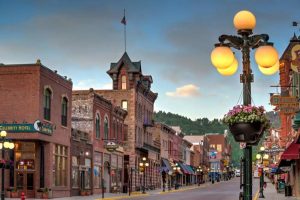 A mostly male population eagerly patronized the many saloons, gambling establishments, dance halls, and brothels. These establishments were considered legitimate businesses and were well known throughout the area.
A mostly male population eagerly patronized the many saloons, gambling establishments, dance halls, and brothels. These establishments were considered legitimate businesses and were well known throughout the area.
In 1890, the railroad connected the town to the outside world. Illegal beginnings aside, Deadwood was a town that was now here to stay. The treaty with the Lakota-Sioux was broken and the Black Hills would never again belong to them. As unfair as it was to break the treaty, I don’t think that it could have lasted forever anyway, because the United Stated was going to be populated from coast to coast one way or the other.
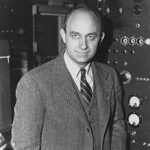
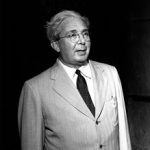 It’s no secret that various governments have had secret projects over the years to create bigger and better weapons of war to be used against enemy governments in the event of a war. I think that there are those who believe that only rogue countries do this sort of thing, but that isn’t so. In the United States, where Enrico Fermi, an Italian physicist and the creator of the world’s first nuclear reactor, and Leó Szilárd a Hungarian-German physicist and inventor; had both emigrated to America, the discovery of the nuclear chain reaction led to the creation of the first man-made reactor, known as Chicago Pile-1, which achieved criticality on December 2, 1942. This work became part of the Manhattan Project, a massive secret U.S. government military project to make enriched uranium and by building large production reactors to produce enriched plutonium for use in the first nuclear weapons. The United States would test an atom bomb in July 1945 with the Trinity test, and eventually two such weapons were used in the atomic bombings of Hiroshima and Nagasaki. Of course, weapons of warfare are not the only use for nuclear power, but they are what most of us think about when we think about going nuclear.
It’s no secret that various governments have had secret projects over the years to create bigger and better weapons of war to be used against enemy governments in the event of a war. I think that there are those who believe that only rogue countries do this sort of thing, but that isn’t so. In the United States, where Enrico Fermi, an Italian physicist and the creator of the world’s first nuclear reactor, and Leó Szilárd a Hungarian-German physicist and inventor; had both emigrated to America, the discovery of the nuclear chain reaction led to the creation of the first man-made reactor, known as Chicago Pile-1, which achieved criticality on December 2, 1942. This work became part of the Manhattan Project, a massive secret U.S. government military project to make enriched uranium and by building large production reactors to produce enriched plutonium for use in the first nuclear weapons. The United States would test an atom bomb in July 1945 with the Trinity test, and eventually two such weapons were used in the atomic bombings of Hiroshima and Nagasaki. Of course, weapons of warfare are not the only use for nuclear power, but they are what most of us think about when we think about going nuclear.
In reality, much more has come from nuclear energy. In August 1945, the pocketbook The Atomic Age, became the first widely distributed account of nuclear energy. It discussed the peaceful future uses of nuclear energy and painted a picture of a future where fossil fuels would go unused. Nobel laureate Glenn Seaborg, who later chaired the Atomic Energy Commission, is quoted as saying “there will be nuclear powered earth-to-moon shuttles, nuclear powered artificial hearts, plutonium heated swimming pools for SCUBA divers, and much more.” Then, on December 20, 1951, came the first light bulbs ever lit by electricity generated by nuclear power at EBR-1 at Argonne National Laboratory West.
Nuclear power is still producing electricity today. The United States has more than 100 reactors, although it creates most of its electricity from fossil fuels and hydroelectric energy. Nations such as Lithuania, France, and Slovakia create almost all of their electricity from nuclear power plants. Uranium is the fuel most widely used to produce nuclear energy. I think most people have heard of the disasters at Chernobyl, April 26, 1986, Kyshtym, September 29, 1957, Three Mile Island, March 28, 1979, and Windscale, October 10, 1957. Some were worse than others, but all were scary situations. I don’t know how I feel about the use of nuclear power as opposed to fossil fuels, hydroelectric energy, or wind energy, because I think that quite possibly each has their place, and that it would be difficult to rely on just one type of fuel.
The United Kingdom, Canada, and the USSR continued to research and develop nuclear industries over the course of the late 1940s and early 1950s. Electricity was first generated by a nuclear reactor on December 20, 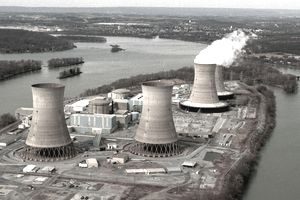 1951, at the EBR-I experimental station near Arco, Idaho, which initially produced about 100 kW. In the United States work was also strongly researched on nuclear marine propulsion, with a test reactor being developed by 1953…eventually, the USS Nautilus, the first nuclear-powered submarine, would launch in 1955. Then, in 1953, President Dwight Eisenhower gave his “Atoms for Peace” speech at the United Nations. In it he emphasized the need to develop “peaceful” uses of nuclear power quickly. The concern was over any further us in war situations. This was followed by the 1954 Amendments to the Atomic Energy Act which allowed rapid declassification of United States reactor technology and encouraged development by the private sector.
1951, at the EBR-I experimental station near Arco, Idaho, which initially produced about 100 kW. In the United States work was also strongly researched on nuclear marine propulsion, with a test reactor being developed by 1953…eventually, the USS Nautilus, the first nuclear-powered submarine, would launch in 1955. Then, in 1953, President Dwight Eisenhower gave his “Atoms for Peace” speech at the United Nations. In it he emphasized the need to develop “peaceful” uses of nuclear power quickly. The concern was over any further us in war situations. This was followed by the 1954 Amendments to the Atomic Energy Act which allowed rapid declassification of United States reactor technology and encouraged development by the private sector.

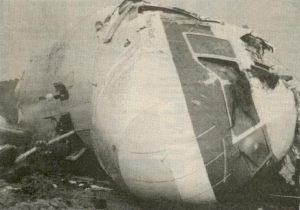 Recently, I became interested is unusual military bases, after coming across on called RAF Rudloe Manor…an English military base that looked, and in fact was an old English manor. Another military base, this one in the United States, in Virginia, near Dulles International Airport, has now come to my attention, but for multiple reasons. Mount Weather Emergency Operations Center is a civilian command facility in the US Commonwealth of Virginia, used as the center of operations for the Federal Emergency Management Agency (FEMA). Also known as the High Point Special Facility (HPSF), its preferred designation since 1991 is “SF”.
Recently, I became interested is unusual military bases, after coming across on called RAF Rudloe Manor…an English military base that looked, and in fact was an old English manor. Another military base, this one in the United States, in Virginia, near Dulles International Airport, has now come to my attention, but for multiple reasons. Mount Weather Emergency Operations Center is a civilian command facility in the US Commonwealth of Virginia, used as the center of operations for the Federal Emergency Management Agency (FEMA). Also known as the High Point Special Facility (HPSF), its preferred designation since 1991 is “SF”.
Mount Weather Emergency Operations Center gained some “fame” for a completely different reason in 1974. December 1, 1974 was a windy, stormy day in the Washington DC area. Trans World Airlines Flight 514 was en route from Indianapolis, Indiana, and Columbus, Ohio, to Washington Dulles International Airport, but was originally supposed to land at Washington National Airport. The Boeing 727-231, registration N54328, was diverted to Dulles when high crosswinds, east at 32 mph and gusting to 56 mph, prevented safe operations on the main north-south runway at Washington National. The flight was being vectored for a non-precision instrument approach to runway 12 at Dulles. Air traffic controllers cleared the flight down to 7,000 feet before clearing them for the approach while not on a published segment. At this point, there was some confusion in the cockpit over whether they were still under a radar-controlled approach segment which would allow them to descend safely, or not. The jetliner began a descent to 1,800 feet, shown on the first checkpoint for the published approach. After reaching 1,800 feet there were some 100 to 200 foot altitude deviations which the flight crew discussed as encountering heavy downdrafts and reduced visibility in snow. Nevertheless, their tower controlled approach had ended.
In the stormy conditions, late on that Sunday morning, the aircraft was in controlled flight, when it impacted a low mountain about thirty miles northwest of its revised destination. That mountain was Mount Weather, Virginia, where the Mount Weather Emergency Operations Center was located. The plane impacted the west slope of Mount Weather at 1,670 feet above sea level at approximately 265 mph. The wreckage was contained within an area about 900 by 200 feet. The evidence of first impact were trees sheared off about 70 feet above the ground…the elevation at the base of the trees was 1,650 feet. All 92 aboard, 85 passengers and seven crew members, were killed. “The wreckage path was oriented along a line 118 degrees magnetic. Calculations indicated that the left wing went down about six degrees as the aircraft passed through the trees and the aircraft was descending at an angle of about one degree. After about five hundred feet of travel through the trees, it struck a rock outcropping at an elevation of about 1,675 feet. Numerous heavy components of the aircraft were thrown forward of the outcropping, and numerous intense post-impact fires broke out which were later extinguished. The mountain’s summit is at 1,754 feet above sea level.”
“The accident investigation board was split in its decision as to whether the flight crew or Air Traffic Control were responsible. The majority absolved the controllers as the plane was not on a published approach segment; the dissenting opinion was that the flight had been radar vectored. Terminology between pilots and controllers differed without either group being aware of the discrepancy. It was common practice at the time for controllers to release a flight to its own navigation with “Cleared for the approach,” and flight crews commonly believed that was also authorization to descend to the altitude at which the final segment of the approach began. No clear indication had been given by controllers to Flight 514 that they were no longer on a radar vector segment and therefore responsible for their own navigation. Procedures were clarified after this accident. Controllers now state, “Maintain (specified altitude) until established on a portion of the approach,” and pilots now understand that previously assigned altitudes prevail until an altitude change is authorized on the published approach segment the aircraft is currently flying. Ground proximity detection equipment was also mandated for the airlines.”
During the NTSB investigation, it was discovered that a United Airlines flight had very narrowly escaped the same fate during the same approach and at the same location only six weeks prior. Apparently, the problem was bigger than it was first thought to be. The crash is also noteworthy, because of the accident location. The undesired attention to the Mount Weather facility, became the unfortunate side effect, because the site was the linchpin of plans implemented by the federal government to ensure continuity in the event of a nuclear war. 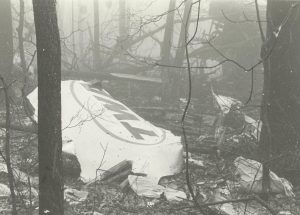
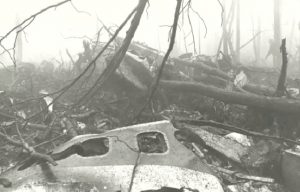 The crash did not damage the facility, since most of its features were underground. Only its underground main phone line was severed, with service to the complex being restored by C&P Telephone within 2½ hours after the crash. Nevertheless, the crash brought to light the possibility of damage to an important facility by a plane crash, which was a distinct possibility due to the flight path of planes landing at Dulles International Airport.
The crash did not damage the facility, since most of its features were underground. Only its underground main phone line was severed, with service to the complex being restored by C&P Telephone within 2½ hours after the crash. Nevertheless, the crash brought to light the possibility of damage to an important facility by a plane crash, which was a distinct possibility due to the flight path of planes landing at Dulles International Airport.
 When most people think of a meteor or meteorite hitting the earth, they think of the complete destruction of our planet, because that is the image portrayed by the movies, but the reality is that the earth gets hit quite a bit, and the effects are far from disastrous. What is far more unusual, and in reality, almost non existent, is the probability of a person getting hit by a meteorite, in fact, there may only be one known case of that at all.
When most people think of a meteor or meteorite hitting the earth, they think of the complete destruction of our planet, because that is the image portrayed by the movies, but the reality is that the earth gets hit quite a bit, and the effects are far from disastrous. What is far more unusual, and in reality, almost non existent, is the probability of a person getting hit by a meteorite, in fact, there may only be one known case of that at all.
The Sylacauga meteorite fell on November 30, 1954, at 12:46 local time in Oak Grove, Alabama, near Sylacauga. It is commonly called the Hodges meteorite because a fragment of it struck Ann Elizabeth Fowler Hodges (1920–1972). It is thought that Hodges is the only person ever hit by a meteorite, and the meteorite, while officially named the Sylacauga meteorite, was nicknamed the Hodges meteorite. As the meteorite made its way to Earth, the 8 1/2 pound grapefruit-sized chunk of space rock crashed through the roof of Hodges’ home, hit large wooden console radio, and ricocheted into her side and hand, while she napped on a couch. It left a nasty bruise, which looks eerily like a meteorite itself. It was the first documented extraterrestrial object to have injured a human being. The 34-year-old woman was badly bruised on one side of her body, but was able to walk. The event received worldwide publicity.
The meteor made a fireball visible from three states as it streaked through the atmosphere, even though it fell early in the afternoon. There were also indications of an air blast, as witnesses described hearing “explosions or loud booms”. The meteorite was confiscated by the Sylacauga police chief who then turned it over to the United States Air Force. Both Hodges and her landlord, Bertie Guy, claimed the rock, Guy’s claim being that it had fallen on her property. There were offers of up to $5,000 for the meteorite. Hodges and Bertie Guy settled, with Hodges paying $500 for the rock. However, by the time it was returned to Hodges, over a year later, public attention had diminished, and they were unable to then find a buyer. Ann Hodges was uncomfortable with the public attention and the stress of the dispute over ownership of the meteorite, so she donated it to the Alabama Museum of Natural History in 1956. The day after the fall, local farmer Julius McKinney came upon the second-largest fragment from the same meteorite. An Indianapolis-based lawyer purchased it for the Smithsonian Institution. The McKinney family was able to use the money to purchase a car and a house.
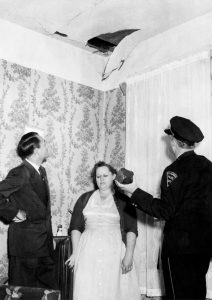
Upon the entry into the atmosphere, the Sylacauga meteorite fragmented into at least 3 pieces…the Hodges fragment 8.5 pounds that struck Ann Elizabeth Hodges. The McKinney fragment 3.7 pounds was found the next day December 1, 1954 by Julius Kempis McKinney, an African-American farmer who sold the meteorite fragment he found to purchase a car and a house. A third fragment is believed to have impacted somewhere near Childersburg northwest of Oak Grove. The meteoroid came in on the sunward side of the Earth, so when it hit, it had passed the perihelion and was traveling outward from the Sun. Considering the orbit estimations, the best candidate as parent body is 1685 Toro. The Sylacauga meteorite is classified as an ordinary chondrite of H4 group. I don’t suppose Ann Elizabeth Hodges cared what kind it was, just that it almost killed her.

 Nick Olsen became my grandnephew when he married my grandniece, Siara this past summer. Nick is perfect for Siara. They love to laugh, and they are always doing funny things. Nick loves to make people laugh, and he has a funny, sarcastic way to do just that. That is something I like. I find comedic sarcasm to be extremely fun, and I like when people are able to laugh at themselves. That describes Nick perfectly. He’s usually up for whatever goofy things Siara wants to do. I think his joking ways were probably in large part one of the things that attracted Siara to him in the first place.
Nick Olsen became my grandnephew when he married my grandniece, Siara this past summer. Nick is perfect for Siara. They love to laugh, and they are always doing funny things. Nick loves to make people laugh, and he has a funny, sarcastic way to do just that. That is something I like. I find comedic sarcasm to be extremely fun, and I like when people are able to laugh at themselves. That describes Nick perfectly. He’s usually up for whatever goofy things Siara wants to do. I think his joking ways were probably in large part one of the things that attracted Siara to him in the first place.
Nick is a hard working man, who takes good care of his wife, and will someday make a great dad, I’m sure. He came from a big family, with 6 siblings, and he loves his mom very much. I’m sure he will want to have his own family. Nick and Siara already have two fur babies, Forest and Emma…their cats. Siara tells me that Nick is obsessed with Emma, and she’s not too sure he doesn’t love the cat more than he does her, but I don’t think so. Nick can fix just about anything, and so he keeps things in their house in good repair. He also likes to “surprise” Siara with a very clean house when she gets home from work. Now that makes him a pretty rare sort of a guy, and a keeper for sure.
Nick and Siara’s dad, Dave Balcerzak have bonded quite well over sports, as well as everything else. They 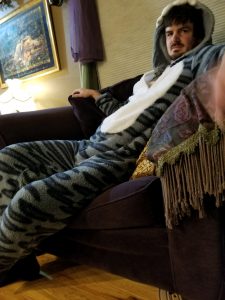
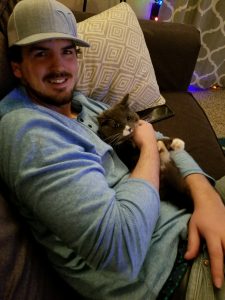 really enjoy getting together to watch the football games. Nick’s favorite team is the Seahawks, but Siara and Dave’s is the Steelers. I’m not sure how that works while watching the games, but they seem to be able to deal with their differences, and the games they spend time watching together are mutually fun for everyone…unless the two teams are playing against each other, that is…then it’s probably war!! Even if they were playing against each other, I’m sure that there would be some good natured ribbing, especially from the winner, but they would still be good friends, and that’s great, because Siara loves her daddy and her hubby, and she loves that they get along so well. Today is Nick’s birthday. Happy birthday Nick!! Have a great day!! We love you!!
really enjoy getting together to watch the football games. Nick’s favorite team is the Seahawks, but Siara and Dave’s is the Steelers. I’m not sure how that works while watching the games, but they seem to be able to deal with their differences, and the games they spend time watching together are mutually fun for everyone…unless the two teams are playing against each other, that is…then it’s probably war!! Even if they were playing against each other, I’m sure that there would be some good natured ribbing, especially from the winner, but they would still be good friends, and that’s great, because Siara loves her daddy and her hubby, and she loves that they get along so well. Today is Nick’s birthday. Happy birthday Nick!! Have a great day!! We love you!!

